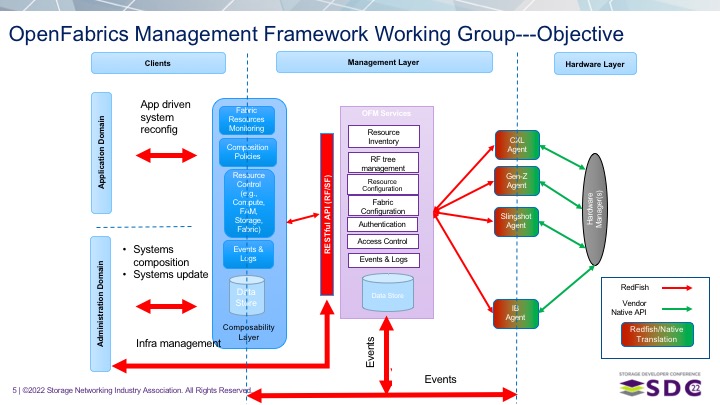H3, a Taiwanese technology company, harnesses the island's high-tech resources and talents to address the escalating demands of data processing in a rapidly expanding landscape. Recognizing the transformative potential of composable infrastructure, H3 is committed to developing solutions that enhance device flexibility and optimize device utilization to reduce enterprises and cloud service providers' Total Cost of Ownership (TCO). By developing resource management systems by integrating diverse vendor products and solutions, H3 aims to accelerate data technology development through heterogeneous computing. With a legacy dating back to 2016 and three generations of products, H3's journey as an industry pioneer continues, now focused on advancing CXL 2.0 switch software and CXL 2.0 Memory Pooling and Sharing. This blog serves as a window into their current development progress and plans.
The CXL 2.0 memory pooling solution and direct mapping functions based on the Xconn CXL 2.0 switch A1 chip have been developed. Customers can start to execute these functions through the Graphical User Interface(GUI) and wait for the next-generation B0 chip to develop more functionalities. The following will list two API examples to illustrate how to perform Memory Pooling and Port Configuration on the management system.
Method | URI | Note |
PATCH | /h3api/v1/CXLDevices/<Device_ID>/MemChunks/<id> | Attach MD to a specific port (pooling)
|
PATCH | /h3api/v1/Ports/<Port_Id> | Port configuration |
Method 1 PATCH, whose URI is /h3api/v1/CXLDevices/<Device_ID>/MemChunks/<id>, mainly attaches the memory chunks cut out of memory to a specific host port in pooling mode for memory sharing.
Method 2 PATCH, its URI is /h3api/v1/Ports/<Port_Id> is mainly for Port configuration, divided into "PortType" and "PortConfig" settings. The "PortType" setting means that switch ports can be configured as "USP" (Upstream port) to connect to the management system, "EP" (Endpoint port) to the host, or "DSP" (Downstream port) to the device. The "PortConfig" setting means users can default the link capability of switch ports up to x16, which also can be x8 and x4 options. With these, users can flexibly set the port configuration according to their needs.

Picture from OFMF official website
After generating the Restful API and designing the GUI of the Xconn A1 chip CXL 2.0 Memory Pooling Solution, the next step will be to standardize the APIs according to DMTF's Redfish specifications. After the API standardization, H3 will integrate the CXL 2.0 Memory Pooling Solution into the Open Fabric Management Framework (OFMF). OFMF is an open-source effort that streamlines the creation of composable distributed disaggregated computer systems. It offers utilities and conceptual data frameworks for overseeing resources, network fabrics, and the arrangement of disaggregated computing systems. OFMF's goal is to decrease resource waste, enhance resource distribution, and elevate the management of high-speed networks in contemporary HPC and Enterprise computing. With the same vision as OFMF, integrating with OFMF will be H3's next great stride to serve more end users to more efficiently utilize the memory resources with the composable resource management system in HPC and cloud computing operations.
In summary, H3's endeavors underscore the pivotal role of system integration in their development initiatives. This approach offers advantages, including heightened device flexibility and utilization, cost reduction through TCO optimization, accelerated progress in data technology, and seamless integration with open-source frameworks like OFMF. Integrating diverse vendor products and solutions into resource management systems can enhance the company's competitive edge and reflect its commitment to driving innovation in a rapidly evolving landscape. As H3 advances its CXL 2.0 Memory Pooling Solution and pursues API standardization in line with DMTF's Redfish specifications, their integration with OFMF stands as a testament to their dedication to resource efficiency and cutting-edge management practices, ultimately benefitting the world of high-performance computing and enterprise solutions.


